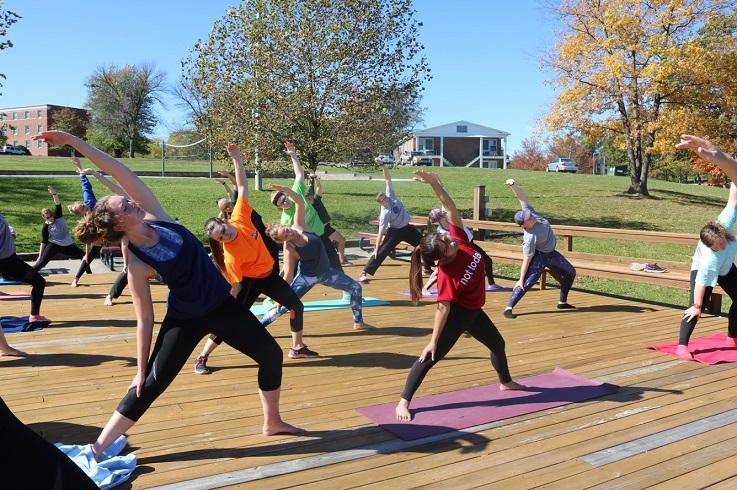Incorporating physical activity into mental health treatment plans for adolescent anxiety and depression

Researchers who surveyed almost 300 patients at a mental health clinic found that about 85 percent of them felt that physical activity improved their mood or their anxiety level, according to a study in the journal General Hospital Psychology.
Mental illness is traditionally treated with methods such as psychotherapy and medication. However, integrating physical activity into treatment plans for anxiety and depression may be the key to alleviating symptoms. Marcia Valenstein, psychiatrist and research scientist at Michigan State University said, “mental health treatment programs need to partner with fitness programs to support their patients’ willingness to exercise more.” She adds, “This support might come from integrating personal trainers into mental health clinics or having strong partnerships with the YMCA or other community recreational facilities.”
Exercise may alleviate symptoms of anxiety and depression in the following ways:
- Releasing “feel-good” chemicals. When you exercise, your brain produces endorphins, which increases your sense of well-being.
- Providing healthy coping methods. Through exercise, you might be able to take your mind off your worries and find a method to motivate you.
- Impacting self-esteem. A regular exercise routine may improve self-confidence.
- Improving quality of sleep. Symptoms often include insomnia – regular exercise makes it easier to fall asleep and often leads to better sleep.
- Increasing blood flow to the brain. Exercise helps your brain grow more neurotransmitters, improving mood and aiding cognitive functions.
- Helping the brain produce serotonin. This is the chemical that many antidepressants
- Encouraging socialization. Sufferers of anxiety or depression often feel withdrawn. An exercise program may help to motivate and encourage interaction with others.
Exercise science professionals aid in creating exercise programs for this patient population. Due to the sensitive nature of depression and anxiety, treatment must be handled very carefully. An exercise professional guides a patient to physical activity routines that suit the patient’s unique health needs in such a way that exercise compliments, rather than replaces, existing treatment methods.
Anxiety and Depression in Children and Teens
Over the past decade, the rate of anxiety and depression has been growing among children and teens. Data analysis by Wolters Kluwer Health shows that more than 1 in 20 U.S. children and teens have anxiety or depression. Recent analysis by the RAND Corporation adds to this by estimating that more than 36 percent of girls in America have been or are depressed by the time they reach 17.
Teenagers who suffer from anxiety and depression report issues in school, with relationships and higher rates of comorbidity with other medical needs. This is especially seen in physical health problems like migraines, heart disease, gastrointestinal problems, chronic pain and childhood obesity. The effects of long term untreated anxiety are detrimental to quality of life, physical health and general well-being. Treating this patient population early and effectively is critical to long term health. For this reason, parents, healthcare providers and teachers must explore routes to support children and their anxiety and depression in all areas of life.
Integration of physical activity within traditional treatment methods may be particularly effective for this patient population. While exercise is not to be thought of as a replacement for medical care through medications and counseling, it presents a self-administered treatment that allows for long-term healthy living and lifestyle choices. Additionally, physical activity aids the efficacy of antidepressants and anxiolytics alongside traditional psychotherapy and counseling methods. Not to mention, weight gain is a common side effect of several frequently prescribed psychiatric medications, including SSRIs. Physical activity not only offers methods for alleviating symptoms of anxiety and depression, but also plays a role in combating the side effects that accompany medications.
William Woods University’s B.S. in Exercise Science Programs prepare students for careers as healthcare professionals. Students in all degree concentrations take Measurement and Assessments. Through this course, students are immersed in multiple, hands on opportunities to learn the value of performance data, how to collect and analyze the data, and how to make recommendations to improve programs based on its findings.

